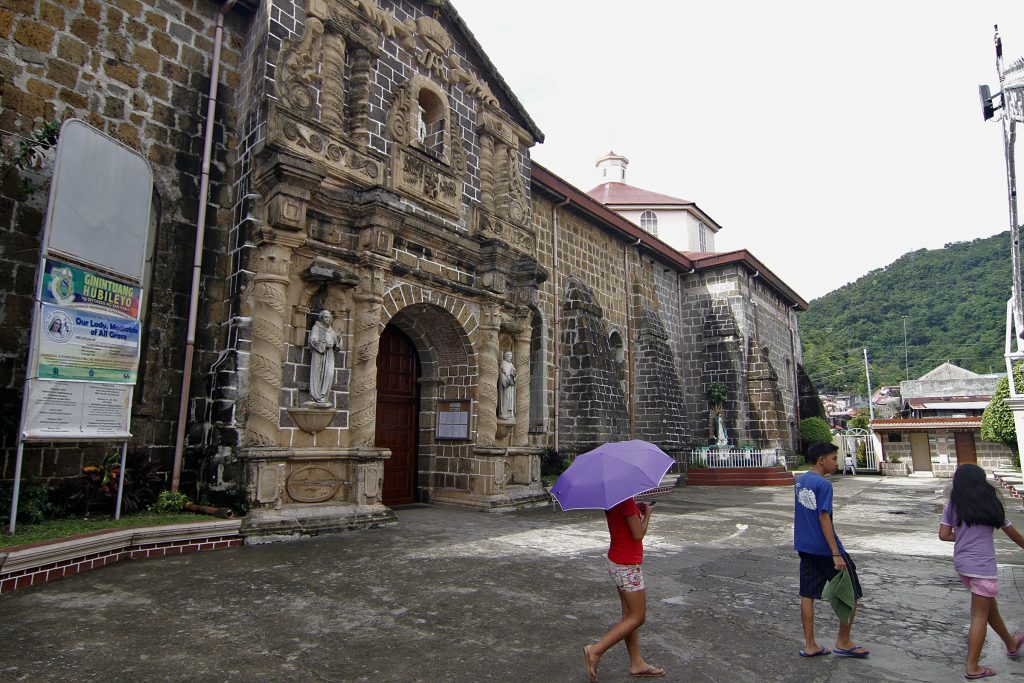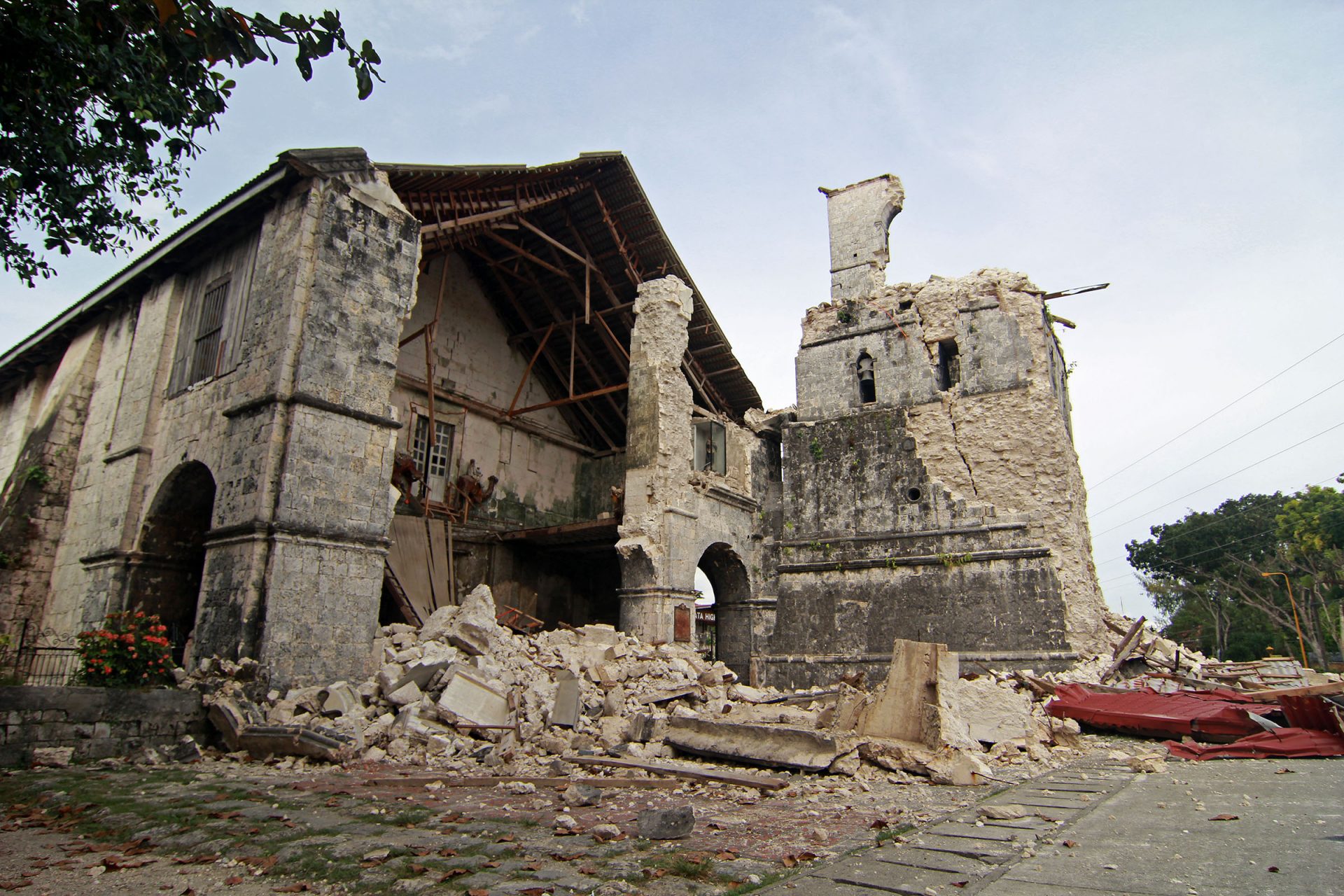The Philippines could very well take advantage of its geographical position at the crossroads of trade between East and West via the Pacific Ocean and the South China Sea to boost economic growth and reduce poverty among Filipinos.
But that economic advantage is offset by its unenviable position of being exceptionally prone to natural disasters. We have to deal with the triple whammy of volcanic eruptions, earthquakes, and typhoons that collectively spell death and destruction on an almost regular basis.
And not to forget, man-made disasters, such as terrorist attacks and armed encounters between government forces and rebels, take their toll on our already fragile economy.
For the Philippines in particular, our vulnerability to all kinds of natural calamities also means that our religious traditions, a legacy of hundreds of years of Spanish colonialism, are under threat. That legacy is made manifest in the Catholic churches dotting most towns and cities, which are inevitably vulnerable to the vagaries of nature.
Take the case of the Catholic church in Paete municipality in Laguna province, which was flooded by a typhoon in December that left a trail of destruction across the region.
According to John Joven Cajipe, a local historian and parish pastoral council president, heavy rains flooded the interior of the Santiago Apostol church, an 18th-century Franciscan edifice renowned for the aesthetic carvings on its facade and the large panel paintings hanging on the nave’s interior walls.
He said the parish would likely have the church restored, but it cannot move on its own because any work on the church needs the approval of the National Historical Commission of the Philippines.
The commission designated the church in 1939 as a National Historical Landmark. Thus, the parish will have to inform the government body first before any repairs can be undertaken.
The first and only time the church was restored by the commission was when the town celebrated its 400th anniversary in 1981.
For Cajipe, the conservation of the church is very important, adding it is not only a “treasure of Paete, but of the whole country.”
In the meantime, the parishioners will just have to wait until the parish and the commission agree on what to do with the crumbling structure.

Parishioners in Tacloban City on Leyte Island, where Super Typhoon Yolanda destroyed or badly damaged Catholic churches on Nov. 8, 2013, are just as anxious to see when these structures can be restored or rebuilt.
The rehabilitation of those churches is being carried out through donations from Catholic bishops in the U.S., according to Archbishop John F. Du of Palo. The money from the United States Catholic Bishops’ Conference is coursed through the Catholic Bishops’ Conference of the Philippines.
There are about 20 churches in the Archdiocese of Palo that were heavily damaged by the massively powerful typhoon, which struck in 2013. The archdiocese has 96 parishes and mission centers spread out in the northern and western parts of Leyte island.
Among the destroyed churches that have been rebuilt is the St. Anthony Parish Church in Tabontabon, Leyte. It is now the biggest parish church and Archbishop Du has declared it an Archdiocesan Shrine of St. Anthony of Padua.
Even earlier, some of the oldest churches in the Philippines crumbled as a result a 7.2 magnitude earthquake that shook the provinces of Bohol, Cebu, and other parts of the Visayas and Mindanao on Oct. 15, 2013.
At least 10 churches were damaged by the quake. They include the Church of San Pedro Apostol, Loboc; Church of Our Lady of Light, Loon; Santissima Trinidad Parish, Loay; Church of Our Lady of the Immaculate Conception, Baclayon; Church of Our Lady of the Assumption, Dauis; San Nicolas Church, Dimiao; and Santa Cruz Parish Church, Maribojoc — all in Bohol province. Three churches were affected in Cebu: Basilica Minore del Santo Niño, Cebu Metropolitan Cathedral; and St. Catherine’s Church in Carcar.
That translates into thousands of parishioners unable to attend to their spiritual needs.
The Church of San Pedro Apostol in Loboc — renowned for being the second oldest church in Bohol—sustained major damage to its main structure, three-story convent, and bell tower. Its intricate facade completely crumbled while its roof of clay tiles fell to the ground.
Built in 1602 by Jesuit missionaries, the church was taken over by the Augustinian Recollects in 1768. It is one of Bohol’s most famous religious sites and tourist attractions, admired for its beautiful facade and ceiling paintings.
In Cebu, the Basilica Minore del Santo Niño was also heavily damaged. Its belfry collapsed while cracks were found in the walls of the main structure. Due to the danger of more falling structures and debris, mass is being held outside the basilica.
The church was founded by Spanish explorers led by conquistador Miguel Lopez de Legazpi in 1565, making it the oldest Roman Catholic church in the country. The current building was constructed from 1739-40. It was declared a National Historical Landmark in 1941.
“These are old churches, churches that have importance to the culture of our people and our faith,” said Bishop Leonardo Medroso of Tagbilaran.
The Heritage Conservation Society believes that ancient churches in various parts of country face grave risks from natural and man-made disasters — as well as the ravages of time. The society argues they should be fortified and restored because they are not only national treasures but also an important aspects of everyday life in the communities they are based in.
The group called on the Philippine government to allot funds for the proper reconstruction and restoration of these heritage churches, which are priceless cultural treasures.







